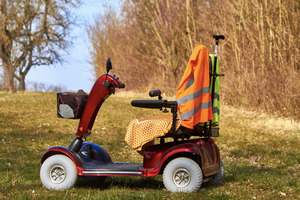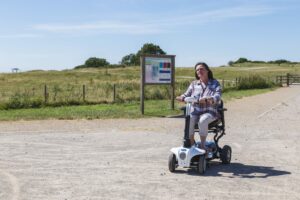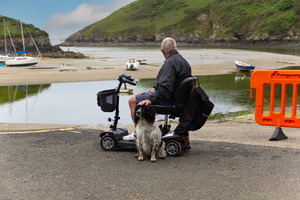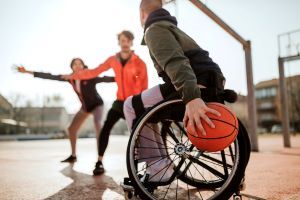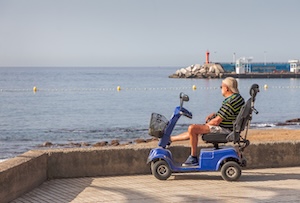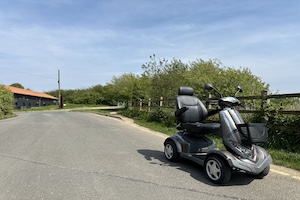As a mobility scooter user, you may often find yourself sharing pavements and public spaces with pedestrians. This raises an important question: should mobility scooters give way to pedestrians? What are the official regulations when it comes to sharing pavements with all kinds of users?
In the UK, the use of mobility scooters has grown significantly as an essential tool for those with limited mobility. These devices provide independence and access to everyday activities that would otherwise be difficult or impossible for people with disabilities or mobility impairments.
However, as their presence on pavements and pedestrian areas increases, so too does the need for clear guidelines on how mobility scooters should interact with pedestrians.
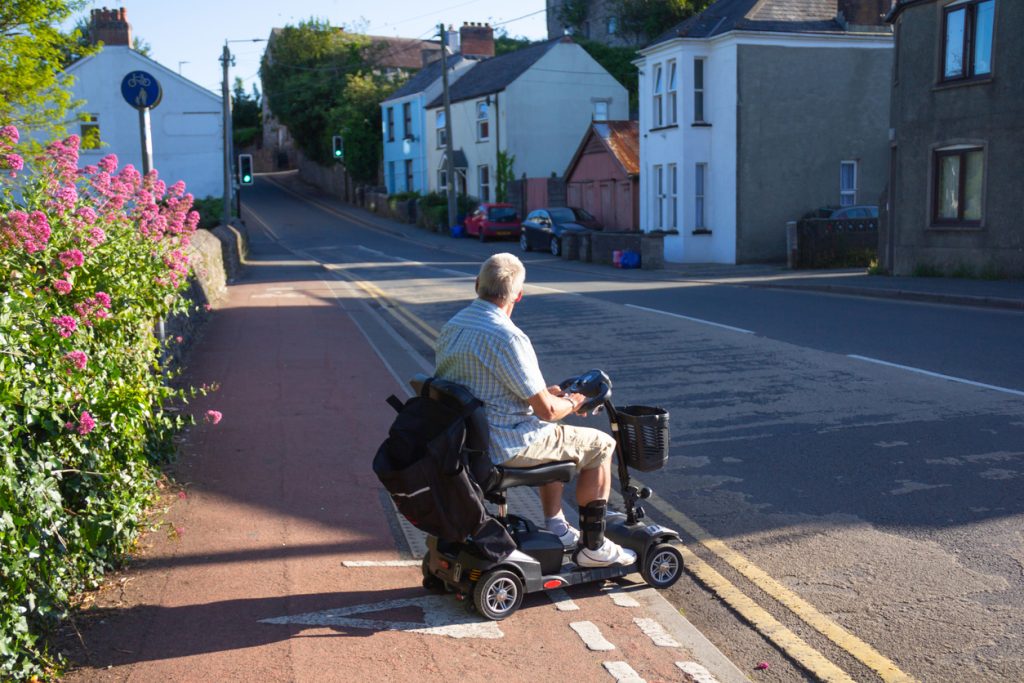
Legal Framework in the UK
The current legal framework in the UK offers some guidance on the issue. Mobility scooters are categorised into two classes:
1. Class 2 mobility scooters – These are designed for pavement use and have a maximum speed of 4 mph (6.4 km/h).
2. Class 3 mobility scooters – These are larger, can be used on roads, and have a maximum speed of 8 mph (12.8 km/h). When used on pavements, their speed must be limited to 4 mph.
The Highway Code stipulates that when mobility scooters are used on pavements, users must give priority to pedestrians and show particular care around vulnerable individuals, such as the elderly, disabled people, and children.
Although this provides some legal clarity, it does not resolve all the practical concerns surrounding the issue. Read more about mobility scooter rules and regulations.
Balancing Accessibility and Safety
For pedestrians, pavements are seen as a safe zone, free from vehicles, where they can move freely without worrying about the speed or proximity of moving objects. However, mobility scooters, while technically not vehicles in the conventional sense, introduce a form of motorised transport to this environment. With that, comes added risk to pedestrians.
The argument that mobility scooters should give way to pedestrians is grounded in safety and accessibility. Pedestrians, particularly those who are frail, blind, or have hearing impairments, may be startled or physically endangered by the speed and proximity of a mobility scooter.
While mobility scooters may be used by people with disabilities, the vehicles themselves pose the greatest threat – and therefore must give way to others on the pavement.
Pedestrians’ Rights: Pedestrians should not have to navigate around scooters that might be travelling faster than walking speed. Pavements are primarily designed for walking, and pedestrians have a right to feel safe in these areas.
The relatively small size of pavements in many UK towns and cities further exacerbates this issue, making it difficult for scooters and pedestrians to share the space harmoniously.
Scooter Users’ Perspective: On the other hand, mobility scooter users rely on these devices to maintain their independence. Many scooter users are elderly or disabled, and the scooters represent a vital lifeline to them.
Imposing strict rules that always require scooter users to give way might create frustration and potentially limit their ability to move freely. For some, stopping or manoeuvring to give way could be physically difficult, especially on uneven pavements or in crowded areas.
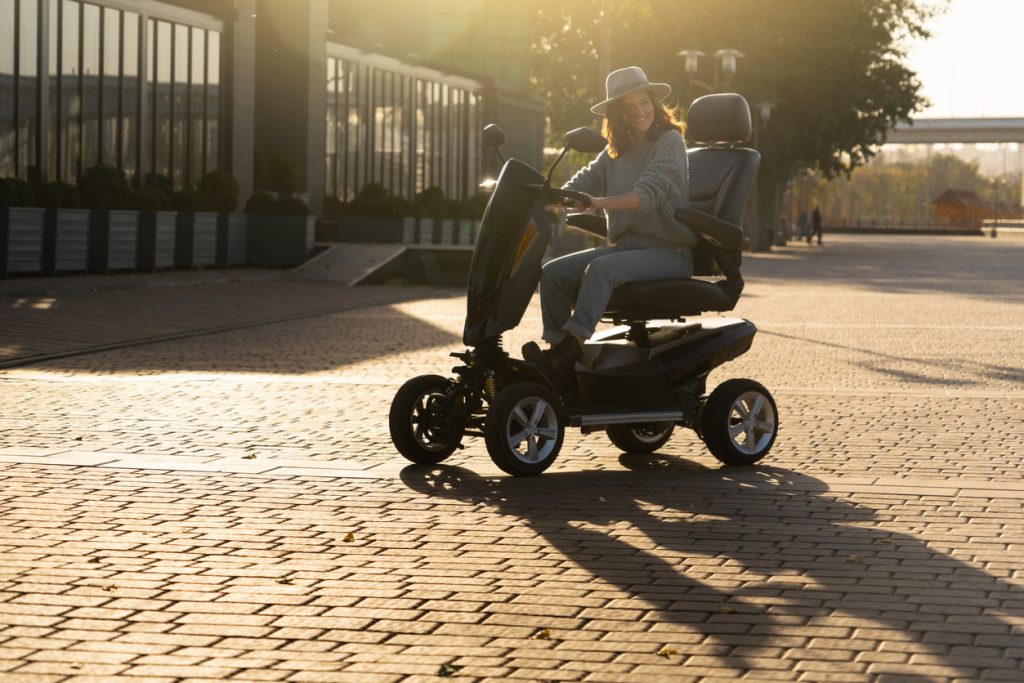
Finding a Middle Ground: Responsible Use and Shared Spaces
The debate over whether mobility scooters should always give way to pedestrians requires a balance of safety, accessibility, and consideration for all users of public spaces. A few key suggestions could help address this issue:
1. Speed Control and Enforcement
The maximum speed limit for Class 2 scooters on pavements is already 4 mph, but ensuring compliance is key.
Many pedestrians still feel that mobility scooters travel too fast, and a slower speed in crowded areas may reduce the risk of accidents. The introduction of clear signage and enforcement could improve safety.
2. Awareness and Education
Both pedestrians and mobility scooter users can benefit from greater awareness of the rules and responsibilities of shared pavement use.
Campaigns such as our own Safer Mobility campaign, designed to raise general awareness on mobility scooter safety would contribute to safer pavements. Equally, pedestrians need to be aware of scooter users’ needs and avoid unnecessary obstructions or erratic movements.
3. Improving Infrastructure
Wider pavements, smoother surfaces, and designated zones for different users could help accommodate the growing number of mobility scooters being used on roads and pavements alike. In some cities, shared spaces with clear markings for pedestrians, cyclists, and scooter users could reduce conflict.
Take a look at our ranking of UK cities based on accessibility to see where infrastructure improvements are desperately needed.
4. Legal Reforms
While the Highway Code offers some guidance, there is room for improvement.
For example, introducing more accessible training for mobility scooter users who want it could help reduce accidents.
While pedestrians should always feel safe on pavements, it is equally important to ensure that mobility scooter users can maintain their independence and access to public spaces.
Finding a solution that balances these interests requires a combination of education, responsible behaviour, better infrastructure, and potentially stricter regulations.

